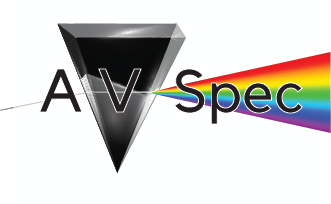Welcome to the Spectroscopy Section
The AAVSO Spectroscopy Section is dedicated to the promotion and advancement of astronomical spectroscopy for individuals of all skill levels. Here you can learn the methods for producing quality spectra, participate in interesting observing projects, and share your knowledge with others. We are a diverse group, ranging from the beginner to those more advanced - working together to develop our skills and knowledge to produce astronomical spectra of value to the scientific community. Our focus is to not only develop our skills for acquiring and processing spectra, but to also understand the underlying physical processes that produce them.
Interested in joining? Please click here for more information on joining a Section.
Leadership Team
AAVSO Spectroscopy Section leadership team |
|
|---|---|
Section Leader |
Scott Donnell - Contact |
Scientific Advisor |
Steve Shore - Contact |
With contributions from Ryan Maderak, Ulisse Munari, David Whelan, Stella Kafka, and Lauren Herrington.
Monthly Meetings
We meet on the second Wednesday of every month via Zoom. These meetings typically include a presentation on a topic of interest to observers of all skill levels, as well as general discussions on spectroscopic methods and physical interpretations. These meetings are open to everyone and are intended to be a forum for sharing knowledge and developing skills.
Click here for the next meeting’s agenda.
Meeting times are:
| US Standard Time | (November–March) | |||
|---|---|---|---|---|
| UTC | EST (UTC-5) | CST (UTC-6) | MST (UTC-7) | PST (UTC-8) |
| 00:00 | 7:00 p.m. | 6:00 p.m. | 5:00 p.m. | 4:00 p.m. |
| US Daylight Time | (April–October) | |||
| UTC | EDT (UTC-4) | CDT (UTC-5) | MDT (UTC-6) | PDT (UTC-7) |
| 23:00 | 7:00 p.m. | 6:00 p.m. | 5:00 p.m. | 4:00 p.m. |
Education and Training
An important goal for this section is to provide the observer with the information necessary to help them produce spectra of high quality and aid in understanding the physical processes in the objects being observed. Spectra are typically submitted into AVSpec and it is important that this archival spectra database be free from defects due to improper procedures in acquisition and processing. The program of education and training presented here consists of a series of instructional presentations, links to reference information, and information on the CHOICE course in Spectroscopy conducted by Steve Shore. You can find this information on the Spectroscopy Section Education and Training page.
AVSpec - The AAVSO Database of Variable Star Spectra
AVSpec is the AAVSO’s repository for spectra of variable stars. First-time users will need to add information on their site and equipment, and then submit a test spectrum from a list of standard stars. This spectrum will be validated by a moderator and, if approved, you can start submitting your observations.
- Quick Guide for Submitting Spectra into AVSpec
- Help and FAQ
- AVSpec Page to Submit and Search Spectra
Section Members Observing Programs
Some of the more experienced members of this group are actively engaged in research and programs of spectroscopic observation. The Spectroscopy Section maintains a list of those who are engaged in these activities and a summary of their research:
Recommended Programs of Observations
The most important contribution of small telescope astronomy is to augment observations made by professional astronomers. Professionals typically have limited time on the big telescopes whereas we have the ability to generate spectra over longer time periods and at a higher cadence. As such, we can contribute to ongoing research, provided the data we produce is of good quality and targets specific research goals.
Examples of programs of observation that are both useful and fascinating for the observer to engage in are:
- Interacting binaries such as beta Lyr, W Ser, and the RS CVn stars
- dMe stars (M-type red dwarf stars showing emission lines suggesting enhanced coronal activity)
- Young stellar objects
- Mira variables
- Symbiotic stars, including cataclysmic variables and classical novae
- Be stars
All of these are accessible with small telescopes and spectrometers of moderate (R>1000) resolutions with reasonable exposure times. A list of recommended observing projects and targets can be found on the Recommended Projects page.


